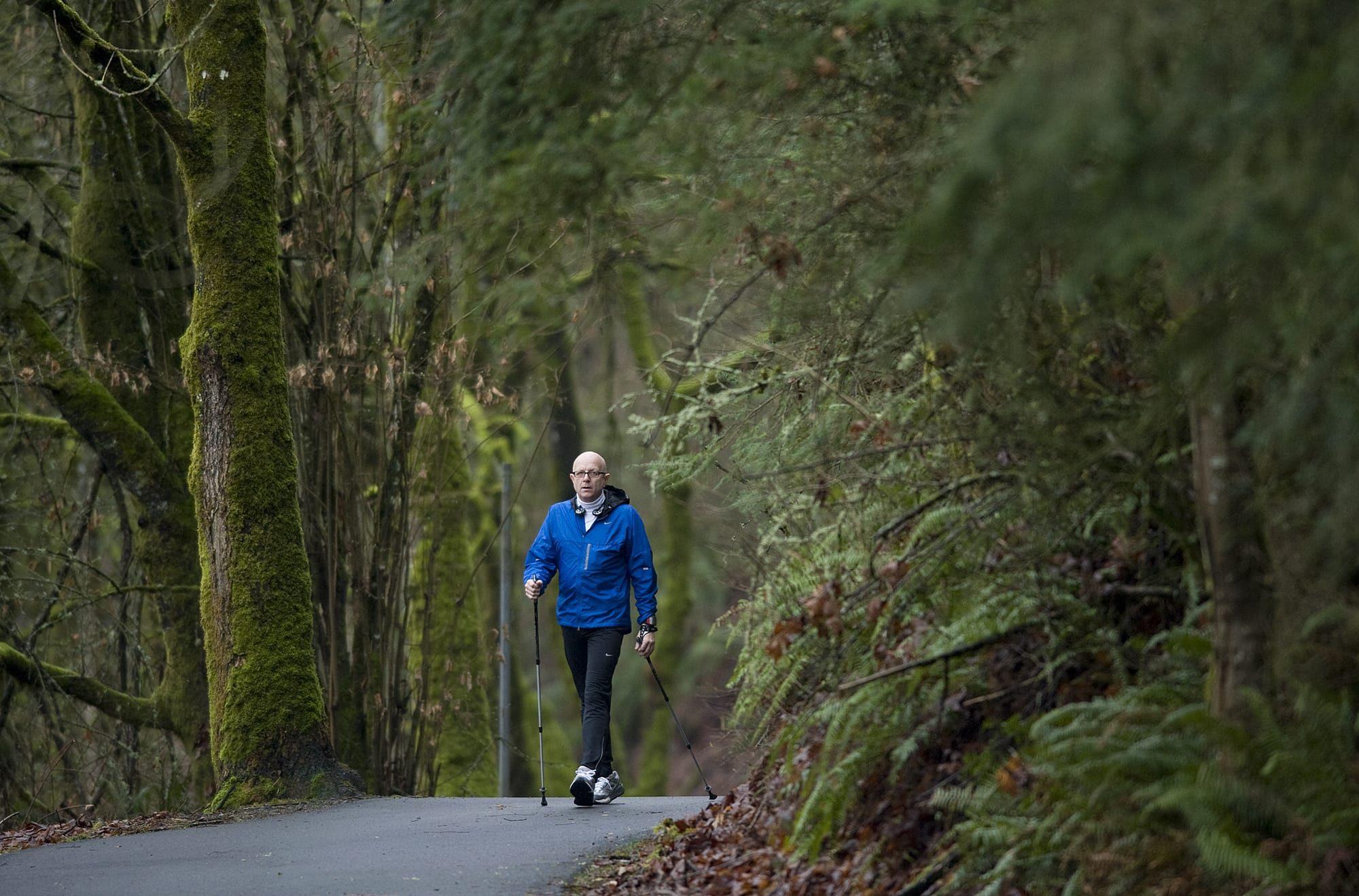Intertwine Alliance
“Green Neighbors,” Clark County’s Department of Environmental Services website:
Thursday’s meeting of the Intertwine Alliance happened to convene in Clark County, but it could have been anywhere in the Portland-Vancouver metropolitan area. That’s the whole point of the Intertwine Alliance, a regional partnership of anyone and everyone interested in developing parks, trails and green spaces.
“The whole idea is to blur boundaries and work across boundaries,” said executive director Mike Wetter. “It is a really unusual organization and a different kind of animal.” At last count, the Intertwine Alliance, which launched in 2007, has built up to 122 partners, Wetter said, along with four paid staff members and an annual budget of $350,000.
The partners are governments and government agencies including parks departments, as well as all sorts of nonprofit agencies (Friends of Clark County, Willamette Riverkeeper, the Sauvie Island Conservancy) and private companies (Kaiser Permanente, PBS Engineering, Keen Footwear). The overall mission is to develop greater vision and collaboration, and leverage more money for parks and green spaces all over the region — with a healthy disregard for “preconceived boundaries” like states and jurisdictions, programs and funding streams, and the Columbia River itself, said Garth Smelser, deputy forest supervisor at the Gifford Pinchot National Forest.
Yes, Wetter said, it’s really all about increasing “our investment in nature,” that is, money. “We don’t do advocacy” at the policy level, he said. “The moment when we start picking this or that issue is the moment we start dividing.”
But at the current rate of capital investment, he said, the regional trail system that’s now envisioned will finally get finished in 190 years. “We’ll all be old people by then,” he quipped.
Burnt Bridge example
Kelly Punteney, a longtime city of Vancouver parks and recreation manager who now works in the private sector, and Annette Griffy, who works for the city’s stormwater engineering program, gave a short overview of the history of the Burnt Bridge Creek Greenway trail as an example of creative cooperation and its excellent results.
In 1968, Punteney recalled, citizen activists began pushing for a trail that would follow Burnt Bridge Creek for what seemed at the time to be a near-astronomical distance: the three miles from Fruit Valley Road to Interstate 5. Making that happen was a “major public infrastructure” challenge that took years to realize, Punteney said.
And yet, in the many years since, the Burnt Bridge Creek trail has extended much farther across the city — eight miles, about halfway across town — since park planners and stormwater engineers realized their common agenda. Today’s Burnt Bridge Creek Greenway functions as Vancouver’s chief natural stormwater drainage basin while also hosting a paved trail that’s popular with walkers, joggers, cyclists and lovers of “urban wild space,” Griffy said. The city now employs a greenway team that’s “out there growing the ecosystem every day,” she said.
“It was an amazing project that took a lot of years, a lot of energy and a lot of folks wanting to work together,” Punteney said. Transportation and roadway planners played an important role, too, Griffy said.
The city wants to keep acquiring property along the eastern stretch of the creek in pursuit of a trail that extends all the way to Camas, Griffy said. “From lake to lake,” Punteney said, referring to Vancouver Lake and Lacamas Lake.
But, Griffy said, the majority of the private property purchases that facilitated the existing trail took place before the Great Recession hit in 2008. Money for more is scarce, she said. “We are always looking for more resources,” she added.
Punteney said that “the new world we live in” requires partnerships across the public, nonprofit and private sectors. But Intertwine program manager David Cohen pointed out that this meeting of approximately 100 people, held at the Water Resources Education Center, consisted almost entirely of government and nonprofit agency workers.
“How do we get others to care? It’s the same faces and same organizations who have always been stepping up. How do we get new ones involved?” he asked.
Health care providers, farmers and agricultural interests, churches and schools and neighborhoods are among other players who ought to be interested in investing in nature, he said — and Intertwine needs to do a better job of spreading the word to them.
Watch out for a marketing campaign that includes smartphone apps and interactive maps as well as a quartet of cartoonish creatures — bicycling beaver, fun-loving duck, do-gooder doe and economic salmon — who hang out at the diner and debate conservation issues, Seinfeld-style, Wetter said.
Cohen noted the tendency for Clark County to get treated as an outlier in the metropolitan area — occupying its own private “silo,” he said — because of cultural, political and physical boundaries. “You are part of this bigger habitat,” he said. “You are part of the work we are doing.”




